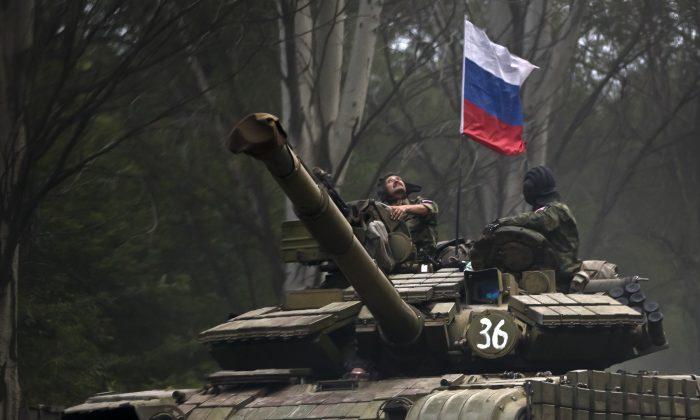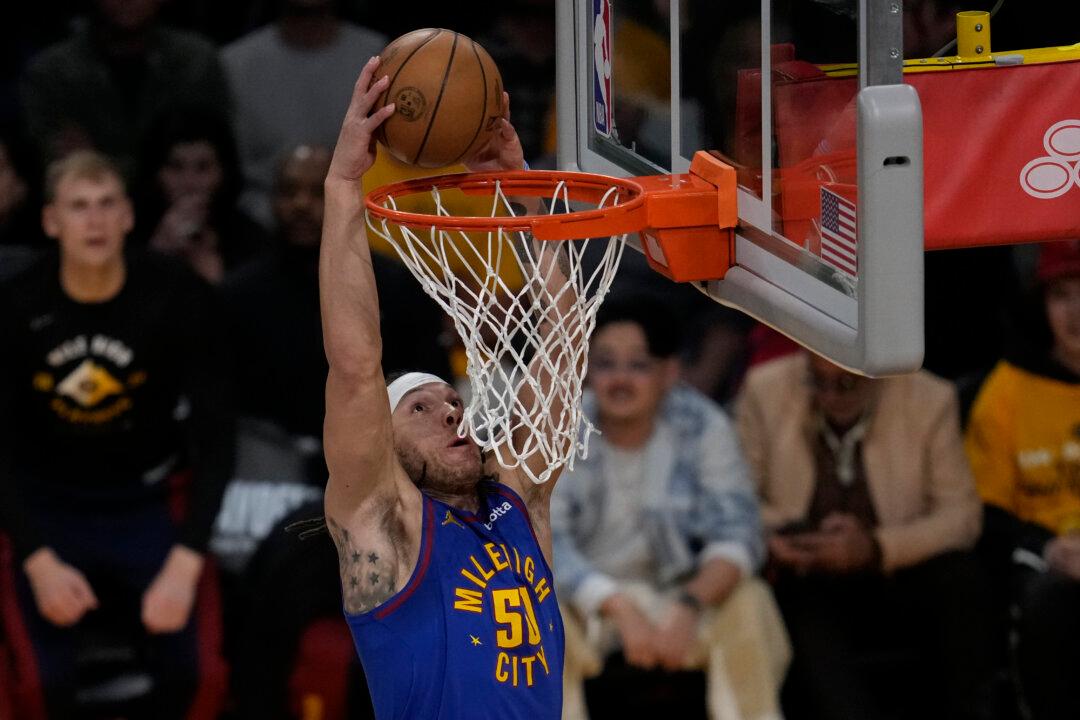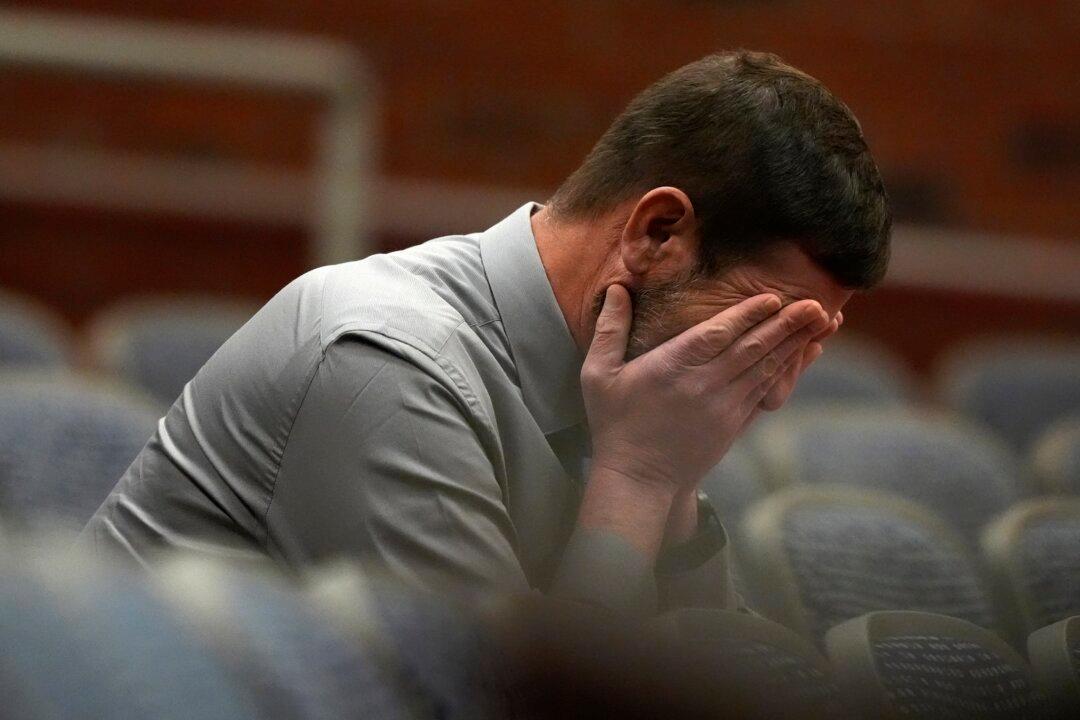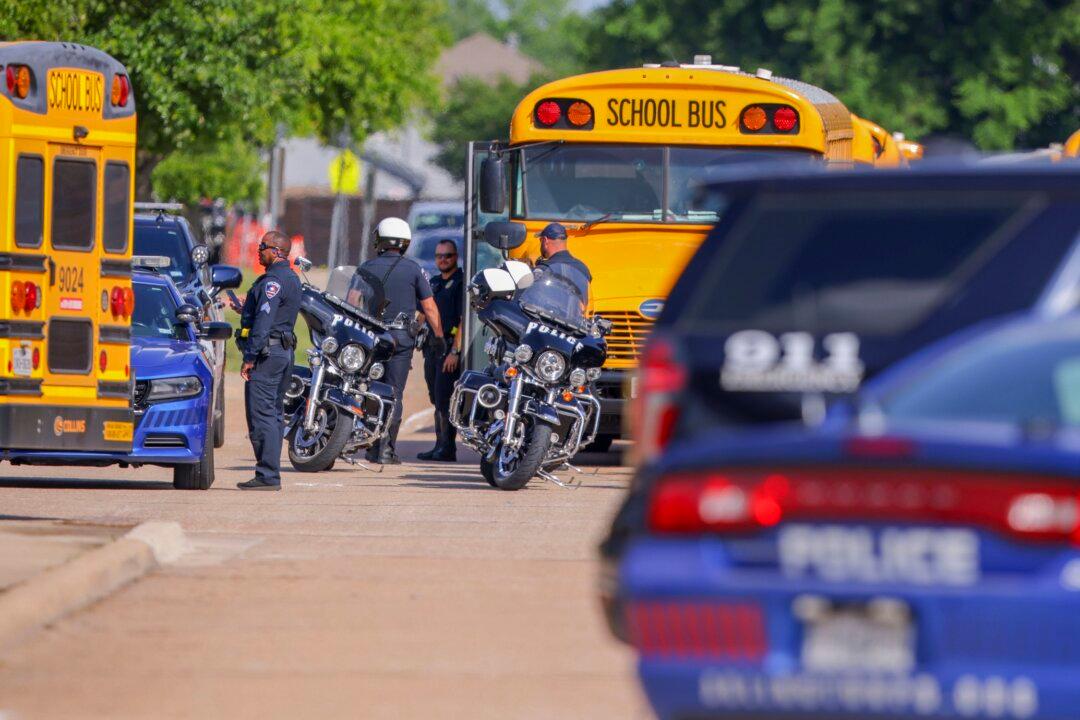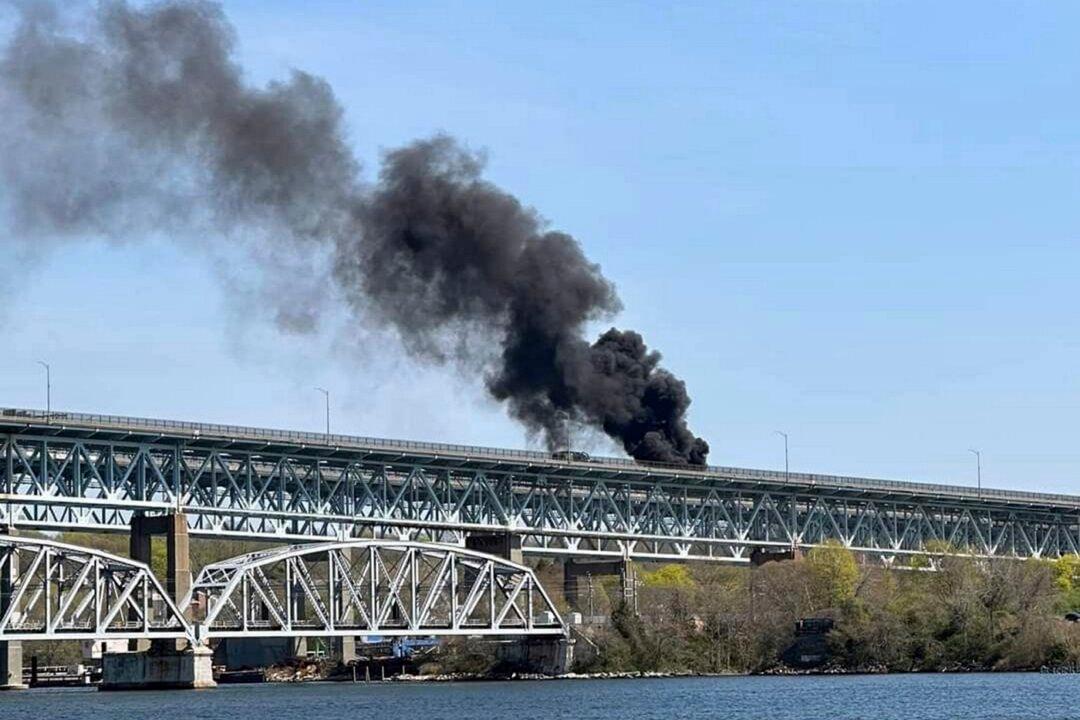YENAKIEYEVE, Ukraine—On a recent spring morning, an important visitor watched Russian-backed rebels conduct infantry maneuvers in eastern Ukraine.
“The general is very pleased,” rebel commander Ostap Cherny told his troops, referring to the figure in camouflage encircled by guards.
The man — almost certainly a Russian military officer — became alarmed when he saw two journalists approach. His entourage shielded him — forbidding photos — and the group sped off in a motorcade, the “general” safely inside a black Toyota SUV with no license plates.
Nearly a year into the Ukraine conflict, the extent of Moscow’s direct involvement has become clear: They may wear camouflage, but the Russians’ presence in eastern Ukraine is hardly invisible.
At the same time, there has been a tactical shift apparently aimed at minimizing Russia’s military presence, part of an effort to persuade the West to lift economic sanctions.
Visits by The Associated Press to training grounds like those near Yenakieyeve and interviews with dozens of rebels reveal that Russian armed forces spearheaded some of the major separatist offensives, then swiftly withdrew.
More recently, as a shaky cease-fire has taken hold, Russia has kept fewer troops in Ukraine but increased rebel training. NATO and an independent London-based Russian scholar estimate that Russia has several hundred military trainers in eastern Ukraine.
Since hostilities began around mid-April last year, the Ukrainian government and the West have accused Moscow of waging an undeclared war in Ukraine by sending thousands of troops to fight with the separatists and providing weaponry. At least 6,000 people have been killed on both sides.
While the Kremlin acknowledges that many Russians have fought as volunteers, it firmly denies sending troops or arming rebels.
Throughout the conflict and often days before a new flashpoint, AP reporters would see as many as 80 armored vehicles a day, mostly coming from the direction of the Russian border. Their ultimate origin was impossible to establish.
Separatist fighters confirm that clothing and ammunition are among supplies they receive from Russia.
“Yes, our brothers are supplying us — you know who,” one fighter who uses the nom de guerre Taicha said at a checkpoint in the town of Krasny Luch. Most rebels won’t reveal their full names for fear of retaliation against their families.
When the town of Debaltseve finally fell to the separatists on Feb. 19 after weeks of fighting over the railroad hub, the true victors were long gone.
“Our friends helped us,” said Andrei, a fighter who fought in Debaltseve. Unlike his platoon, which had nothing newer than a T-72 tank, he said the Russians had modern T-90s. Like other rebels, Andrei would not give his last name because his family lives in a Ukraine-controlled area.
Alexei, another fighter, became animated when asked about Russians in the battle for Debaltseve: “I’m not going to hide it: Russians were here. They went in and left quickly.”
Igor Sutyagin, a senior research fellow at the Royal United Services Institute in London, has spent months collecting evidence of the Russian presence in Ukraine, coming up with an exhaustive list of combat formations.
The presence of large numbers of Russian troops has been a “permanent feature of the conflict” since August, Sutyagin said, with the number peaking at about 9,000 troops in late February. His estimate stems from calculations based on sightings of weaponry as well as information that soldiers post on social media.
Sutyagin corroborated rebel descriptions of Russian troops entering Ukraine and leaving promptly after a battle is won. By his calculations, several hundred Russian servicemen are still in Ukraine.
The Russian Defense Ministry did not respond to numerous calls and faxes seeking comment for this story. Putin’s spokesman Dmitry Peskov said Tuesday that Russia “firmly denies” reports of a Russian military presence in Ukraine.
NATO insists Russian troops continue to operate in eastern Ukraine despite the cease-fire. In recent months, according to Lt.-Col. Jay Janzen at NATO headquarters in Brussels, Russia has transferred more than 1,000 heavy weapons to the separatists.
Gen. Philip Breedlove, commander of NATO forces in Europe, said the alliance’s intelligence indicates that trainers from Russia’s special forces have been instructing fighters in eastern Ukraine about sophisticated Russian-supplied weaponry. Breedlove estimated 250-300 advisers are supervising the training.
Outside Yenakiyeve, where the man referred to as the “general” observed maneuvers, the lack of formal military training among rebels was obvious.
As armored vehicles opened fire, Cherny, their commander, shouted into a walkie-talkie: “Why did you open fire? I didn’t give you an order to open fire!”
Cherny later told the rebels that the “general” was happy: “He said you did fine. But I actually think it was not fine. There’s still a lot of work to do.”
